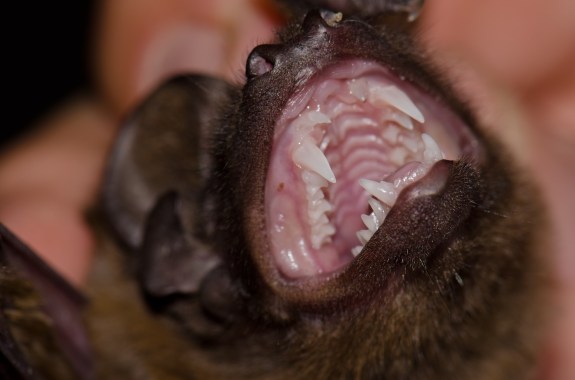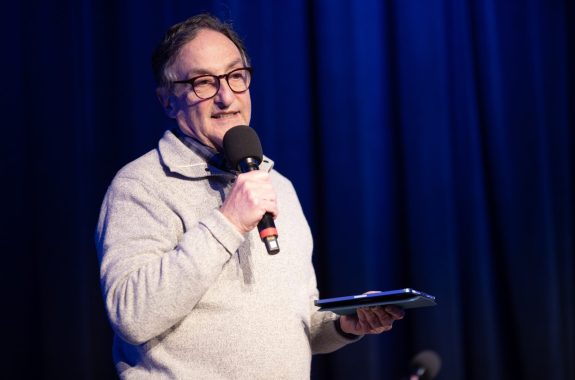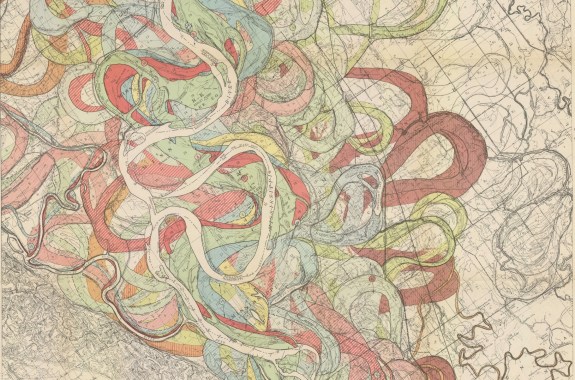On Today's Podcast
Why Hasn’t Wave Energy Gotten Its Sea Legs Yet?
It’s hard to convert energy from the ocean into electricity, thanks to a tough regulatory environment and, well, the ocean.
Listen NowOctober 31, 2025
Why do we find joy in the scary and the macabre? Two psychology experts weigh in on humans’ affinity for horror and desire to get spooked. Plus, tales of the amazing capabilities of bats, spiders, and snakes. And, a guided tour of some of the world’s spookiest lakes.
Why Hasn’t Wave Energy Gotten Its Sea Legs Yet?
It’s hard to convert energy from the ocean into electricity, thanks to a tough regulatory environment and, well, the ocean.
A Halloween Monster Mashup, And A Spooky Lakes Tour
Tales of the amazing capabilities of bats, spiders, and snakes. Plus, a guided tour of some of the world’s spookiest lakes.
An Evening Of Physics And Philosophy With Dr. Sean M. Carroll
On December 5, Host Ira Flatow will be joined by award-winning physicist Dr. Sean M. Carroll to discuss his book, “The Biggest Ideas in the Universe.”
What Happens To Your Digital Presence After You Die?
Our digital presences will outlive us all. How can we best manage files, social media accounts, and recordings of ourselves after we die?
Why Morbid Curiosity Is So Common—And So Fun
Why do we find joy in the scary and the macabre? Two psychology experts weigh in on humans’ affinity for horror and desire to get spooked.
We Asked What Maps You Love. Here’s What You Showed Us.
Maps aren’t just for navigation. They’re also about stories, identity, and our connections to the world around us.
Peanut Allergies In Kids Are Finally On The Decline
A 2017 change in guidance recommended exposing children to allergens “early and often,” likely preventing tens of thousands of allergy cases.
How Do Bacteria Talk To Each Other?
In a story from May, how understanding the ways bacteria communicate could lead to better disease treatments for humans.
A Lab-Grown Salmon Taste Test And More Foodie Innovations
Cell-cultured salmon is showing up on menus. How does it compare to the real thing? Plus, food innovations from cultivated meat to mung beans.
What Did It Feel Like To Be An Early Human?
A new documentary puts viewers in the shoes of Neanderthals and early humans, giving an intimate glimpse into humans’ evolutionary history.
TikTok Is Shaping How We Think About ADHD
In a story from March, how mental health information on social media can be both revelatory and misleading—and how we can make sense of it.
Footage Shows How Narwhals Use Tusks To Hunt And Play
In a story from March, researchers used drones to study the mysterious arctic animals and learn new things about narwhal behavior.
12:17
Have Astrophysicists Spotted Evidence For ‘Dark Stars’?
Data from the Webb Space Telescope may hold evidence of ancient “dark stars,” which would’ve been powered by dark matter, not nuclear fusion.
Enter SciFri’s Nerdy Halloween Costume Contest!
It’s Nightmare on Nerd Street—and your science-inspired Halloween costume could win SciFri’s first-ever costume contest.
10:44
How Federal Cuts Hampered West Alaska’s Storm Forecasts
With gaps in weather balloon data, the National Weather Service didn’t have accurate projections of the worst flooding from Typhoon Halong.
AI Was Supposed To Discover New Drugs. Where Are They?
While some AI-designed drugs have made it to clinical trials, none of them have been approved. Why has it been harder than experts thought?
How Math Helps Us Map The World
In “Mapmatics,” a mathematician tells the stories of how math helps us track epidemics, map the seafloor, and plot a complex delivery route.
How Mapping London Helped Stop A Cholera Outbreak
A 19th century doctor was able to pinpoint which homes were affected by contaminated water, and link that to cholera deaths in the area.
The Science Of Replacing Body Parts, From Hair To Hearts
In “Replaceable You,” Mary Roach describes mind-boggling efforts to replace human body parts—and why it’s proven to be so difficult.
‘Tron: Ares’ And What Happens When AI Gets The Feels
What does AI do with human feelings? To investigate its readiness to serve as a therapist, a neuroscientist took ChatGPT for an emotional ride.



















